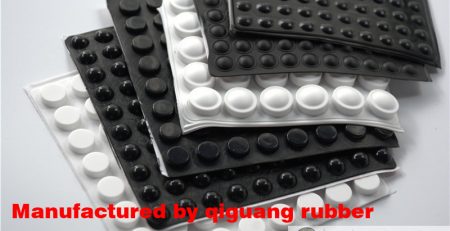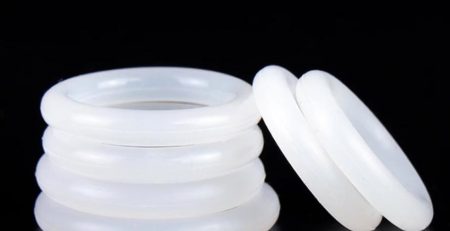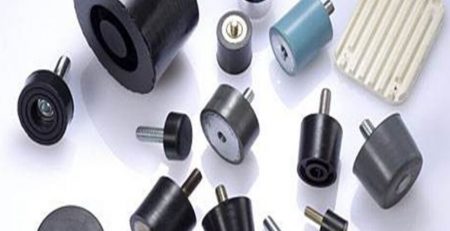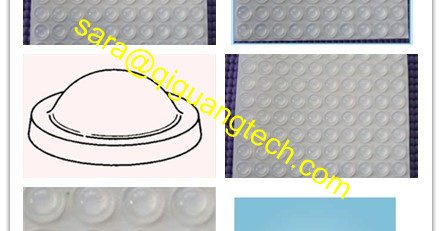What rubber is used for producing rubber seals? Today to talk about the characteristics of different rubber materials!
Rubber seals due to the use of the environment and the occasion of different indicators, the rubber materials used are different, rubber oil sealing materials are nitrile rubber, hydrogenated nitrile rubber, acrylic rubber and fluorine rubber, fluorine silicone rubber, full fluorine rubber and other sealing materials.
1. acrylonitrile-butadiene rubber
The production of seals is very commonly used in the material, oil resistant sealing products using nitrile rubber.
Nitrile rubber has excellent fuel oil resistance and aromatic solvent properties, ordinary requirements can be met, the cost is low.
2. crude rubber
Compared with most synthetic rubber, natural rubber has good comprehensive mechanical properties, cold resistance, high resilience and wear resistance. Natural rubber is not resistant to mineral oil, but it is more stable in vegetable oils and alcohols.
3. acrylic rubber
Acrylate rubber heat resistance and oil resistance comprehensive performance is very excellent, the use of the temperature can be up to 180℃ -200℃, widely used in the requirements of high temperature resistance, heat resistance oil products.
Acrylate rubber is known as automotive rubber, which is a suitable material for rubber oil seal, O-ring, gasket and hose used at high temperature. It is an important material in the automobile industry.
Acrylate rubber also has many other excellent properties —— ozone resistance, flexion resistance, solar aging resistance, good air tightness, rubber transparency and good fabric adhesion.
Acrylate rubber is widely used in —— sponge products, deep well exploration, electrical industry part to replace silicone rubber, adhesives.
4. fluorinerubber
1. Fluorine rubber (fluororubber) refers to the synthetic polymer elastomer containing fluorine atoms on the carbon atoms of the main chain or side chain.
The advantages of fluorine rubber
In rubber sealing materials, its heat resistance (decomposition temperature is greater than 400 degrees Celsius), oil resistance (various fuel, hydraulic oil, lubricating oil, synthetic oil), solvent resistance, climate resistance (other resistance, ozone resistance, radiation resistance), chemical resistance best, all surface nitrile rubber, polyurethane rubber can not be used in high temperature environment or special working liquid
Fluorine rubber can be used as the sealing material, not spontaneous combustion, not combustion, fire has self-extinguishing, with good physical and mechanical properties, is its comprehensive force in all synthetic rubber
Best, commonly known as “rubber king”, has become one of the indispensable and alternative basic materials in modern industry, especially in the field of high technology.
The disadvantages of fluorine rubber its processing process performance is not easy to grasp, the price is high, gorgeous for 20 times of nitrile rubber, cold resistance, poor water resistance, poor elasticity at room temperature, the market has developed resistance
Fluoro rubber products with improved cold and water resistance, and FFKM with better resistance and drug resistance than ordinary fluorine rubber, but the price is more than 10 times higher than that of fluorine rubber.
Application of the fluoro-rubber seals
Fluoro rubber is widely used in national defense, military, automotive, aviation, aerospace and petroleum, fluorine rubber oil seal is also used in drilling machinery, oil refining equipment, natural gas desulfurization device, can withstand high temperature and high pressure oil and strong corrosion medium, fluorine rubber oil seal is used in pumps, pipe joints, equipment containers, for sealing inorganic acid, in military industry, fluorine rubber is mainly used in aerospace, aviation, carrier rocket, satellite, fighter, and new tanks
Electrical line sheath and other aspects, is one of the key sealing materials that cannot be replaced in the defense advanced industry.
5. hydrogenated butadiene-acrylonitrile rubber
Hydroated nitrile rubber is a synthetic polymer that saturated the hydrocarbon chain by hydrogenation, and this special hydrogenation process reduces many nitrile rubber (NBR)
Double bonds on the polymer main chain, therefore, hydrogenated nitrile rubber in addition to retain the original nitrile rubber characteristics, and has a higher degree of heat resistance, ozone aging resistance, heat resistance, chemical resistance properties and mechanical characteristics than nitrile rubber.
Hydrogenated nitrile rubber like nitrile rubber, acrylonitrile (ACN) content increases, the effect of petroleum base oil and fuel oil is enhanced, but its low temperature performance is reduced. Acrylonitrile content typically ranges between 18% and 50%. Hydroated nitrile rubber fills the shortcomings of nitrile rubber and fluoro rubber in many fields.
The hydrogenated nitrile rubber has largely replaced nitrile rubber at extremely high temperature. Although fluorinated rubber has proved excellent resistance to crude oil and processing oil, the test results show that when placed in modern oil wells containing a small amount of amine corrosion inhibitor, it has been replaced by hydrogenated nitrile rubber. Advantages of the hydrogenated nitrile rubber
Excellent heat resistance and oil resistance
Beyond the nitrile rubber five times the combustion oil resistance and ozone resistance
Good wear resistance
The advantages of hydrogenated nitrile rubber
Like nitrile rubber, hydrogenated nitrile rubber is not resistant to polar solvents. Hydrodized nitrile rubber is a new elastomer made of nitrile rubber by catalytic hydrogenation. The hydrogenation reaction increases its cold flow activity (the material deformation caused by increasing the temperature or the load of the applied material). The elasticity of HNBR at low temperature after hydrogenation due to changes in molecular structure.
Vi. Fluorosilicon rubber
Fluorosilicone rubber is like silicone, combining trifluoropropyl, methyl and ethylene as the side chain, but fluorosilicone rubber is fluorinated. The mechanical and physical properties of fluorine silicone rubber are similar to those of silicone, but fluorine silicone rubber has better fuel resistance and mineral oil resistance than silicone, but it is inferior to heat resistance. Fluorosilicone rubber has excellent resistance to aviation fuel oil, hydraulic oil, synthetic diester lubrication and other properties, and can work for a long time at a high temperature of 204°C (400°F). Although mostly used in the aerospace field, but because of its fuel oil resistance and high
The stability under temperature is superior, and the fluorosilicone rubber has been more and more commonly used in the production of seals.
Advantages of Fluorosilicone rubber:
Superior extremely high and low temperature resistance
Superior compression for permanent deformability
Clean, low-smelly and tasteless
Disadvantages of Fluorosilicone rubber:
Due to its low tear resistance, low wear resistance, and high friction coefficient, it is only recommended for static seals.
7. Pfluoride rubber
The high temperature of perfluorinated rubber is better than that of silicone rubber, with good chemical resistance, resistance to most oils and solvents, weather resistance and ozone resistance; the cold resistance is not remarkable.
Advantages of perfluorinated rubber:
Heat resistance up to 200℃; resistance to most oils and solvents, especially to all acids, aliphatic hydrocarbons, aromatic hydrocarbons, and animal and plant oils. Compression deformation resistance is also very good;
Disadvantages of perfluorinated rubber:
Raw material sealing ring price is higher, the production process is more difficult;
Scope of application of perfluorinated rubber:
perfluorinated rubber sealing ring products are widely used in high temperature, ozone resistance and weather resistance requirements of sealing equipment and a variety of high vacuum sealing process. With the development of industry, widely used in automotive, electronics, aerospace, ships and other requirements of high precision, high temperature resistance, high wear resistance, harsh conditions in the working environment, military products are used more.





